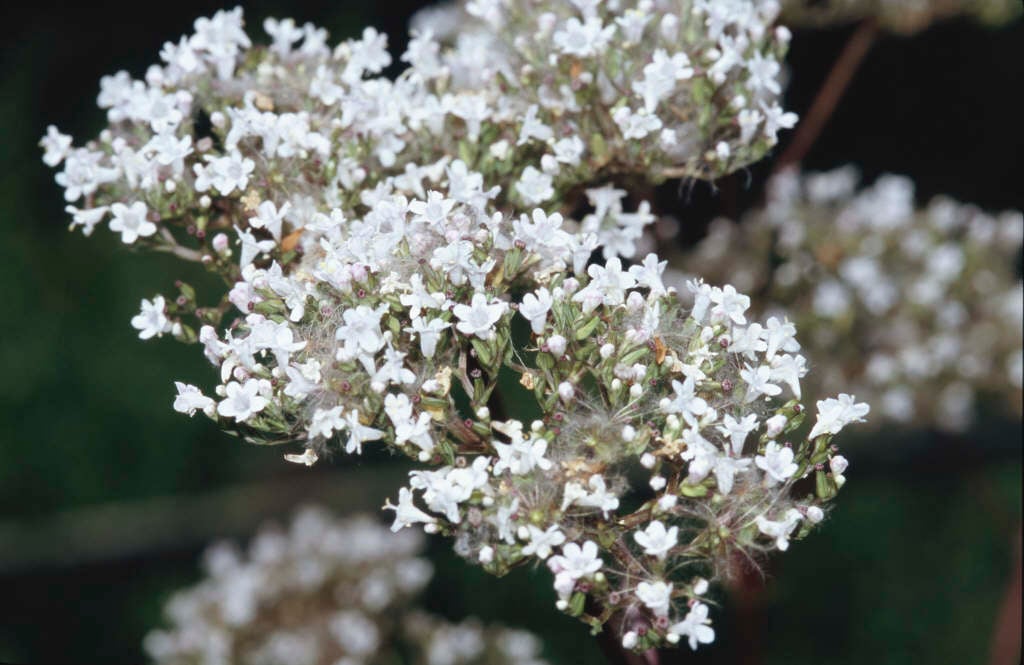Valeriana officinalis
common valerian
A clump-foming herbaceous perennial to 1.5m tall, with aromatic, bright green, pinnate, basal and stem leaves composed of leaflets, the fleshy stems topped with rounded clusters of small pink or white flowers in summer
Other common names
all-healcapon's tail
see morecat's valerian
cut-finger
cut-heal
garden heliotrope
hardy heliotrope
Hercules' all-heal
medicinal valerian
phu
set-wall
set-well
St George's herb
summer heliotrope
Vandal root
herb bennet
Size
Ultimate height
1–1.5 metresTime to ultimate height
2–5 yearsUltimate spread
0.5–1 metresGrowing conditions
Moisture
Moist but well–drainedpH
Acid, Alkaline, NeutralColour & scent
| Stem | Flower | Foliage | Fruit | |
| Spring | Green | |||
|---|---|---|---|---|
| Summer | Pink White | Green | ||
| Autumn | ||||
| Winter |
Position
- Full sun
- Partial shade
Aspect
West–facing or South–facing
Exposure
Sheltered Hardiness
H4Botanical details
- Family
- Caprifoliaceae
- Native to GB / Ireland
- Yes
- Foliage
- Deciduous
- Habit
- Clump forming
- Genus
Valeriana can be annuals, herbaceous perennials or evergreen shrubs, with simple or pinnately lobed leaves and terminal sprays of small, white, pink or yellow flowers
- Name status
Correct
- Plant range
- Eurasia
How to grow
Cultivation
Grow in any moist soil in full sun or dappled shade
Propagation
Propagate by seed in containers in the open, or take basal cuttings (see softwood cuttings) in spring. Can also be propagated by division in spring or autumn
Suggested planting locations and garden types
- Cottage and informal garden
- Wildflower meadow
- City and courtyard gardens
- Coastal
- Wildlife gardens
- Flower borders and beds
Pruning
Can be cut back to ground level in autumn
Pests
Generally pest-free
Diseases
Generally disease-free
Get involved
The Royal Horticultural Society is the UK’s leading gardening charity. We aim to enrich everyone’s life through plants, and make the UK a greener and more beautiful place.
